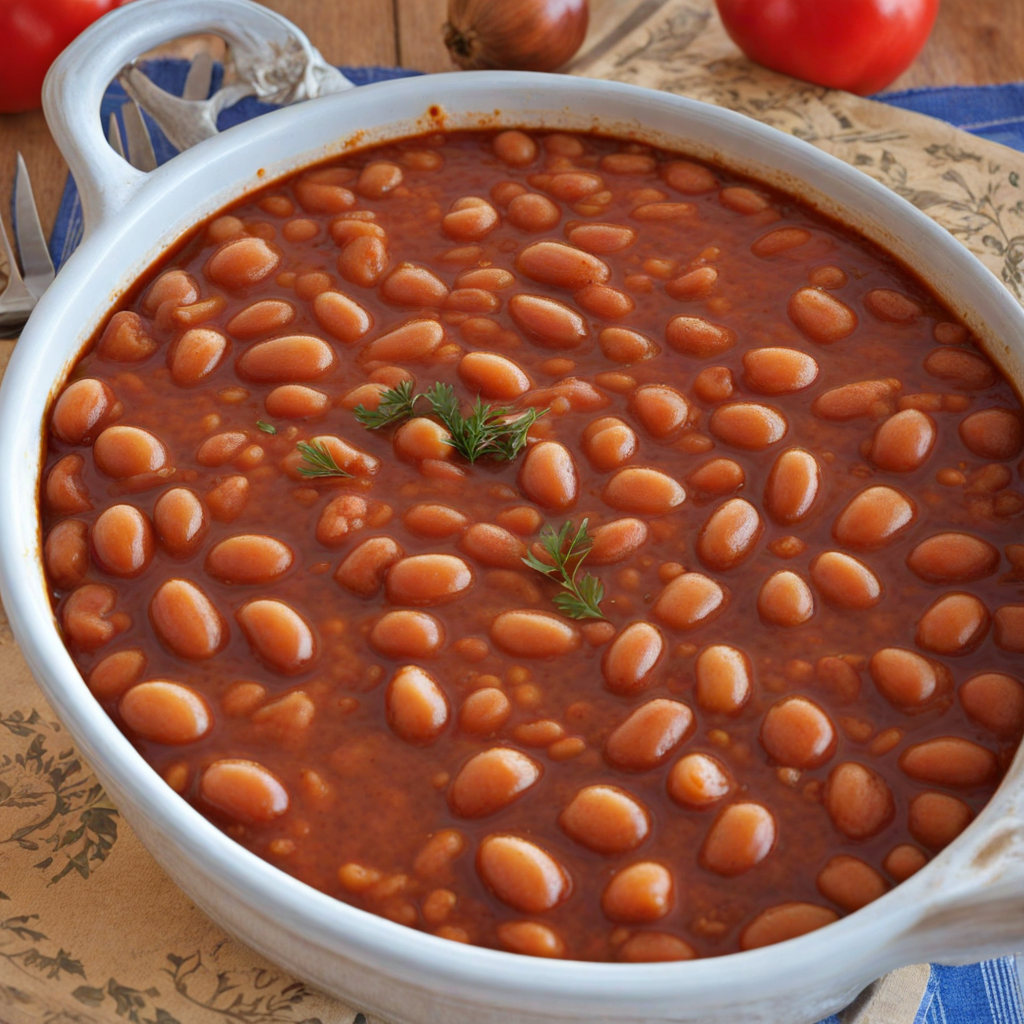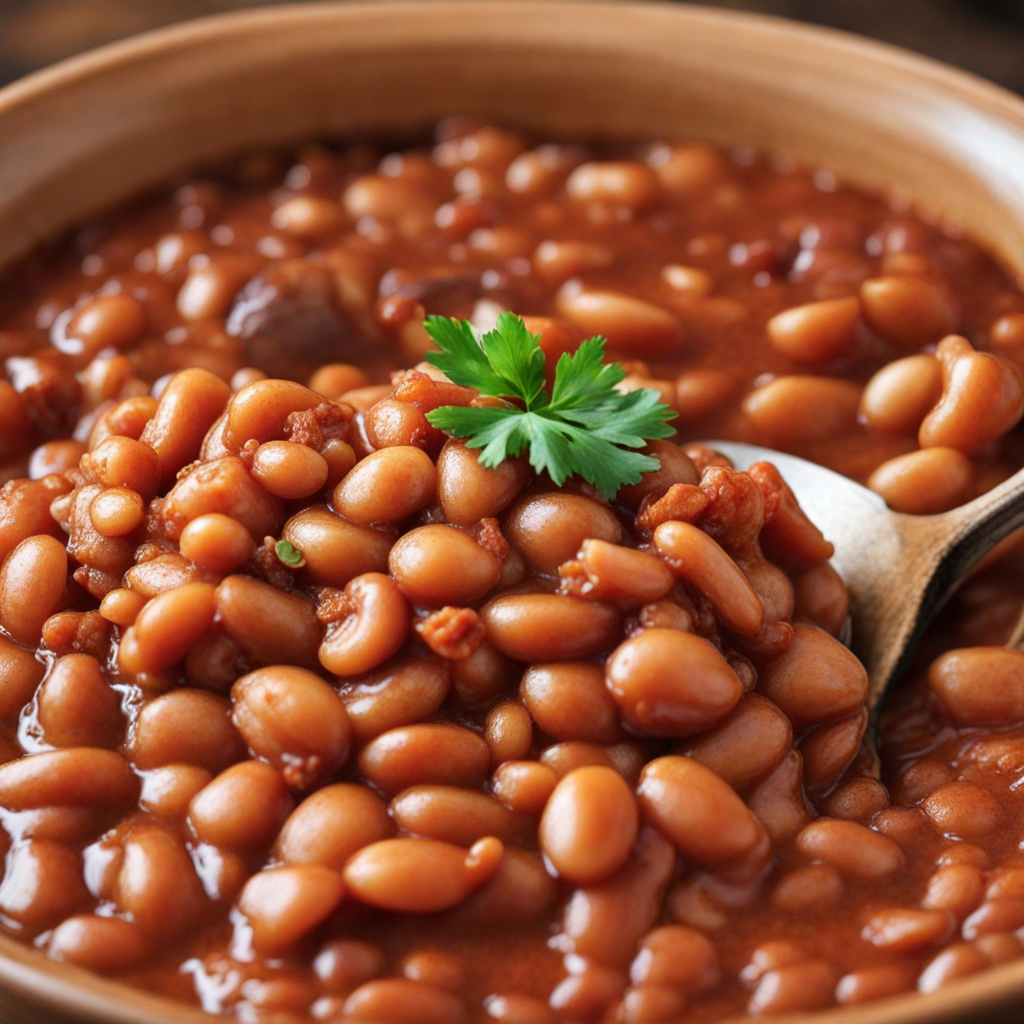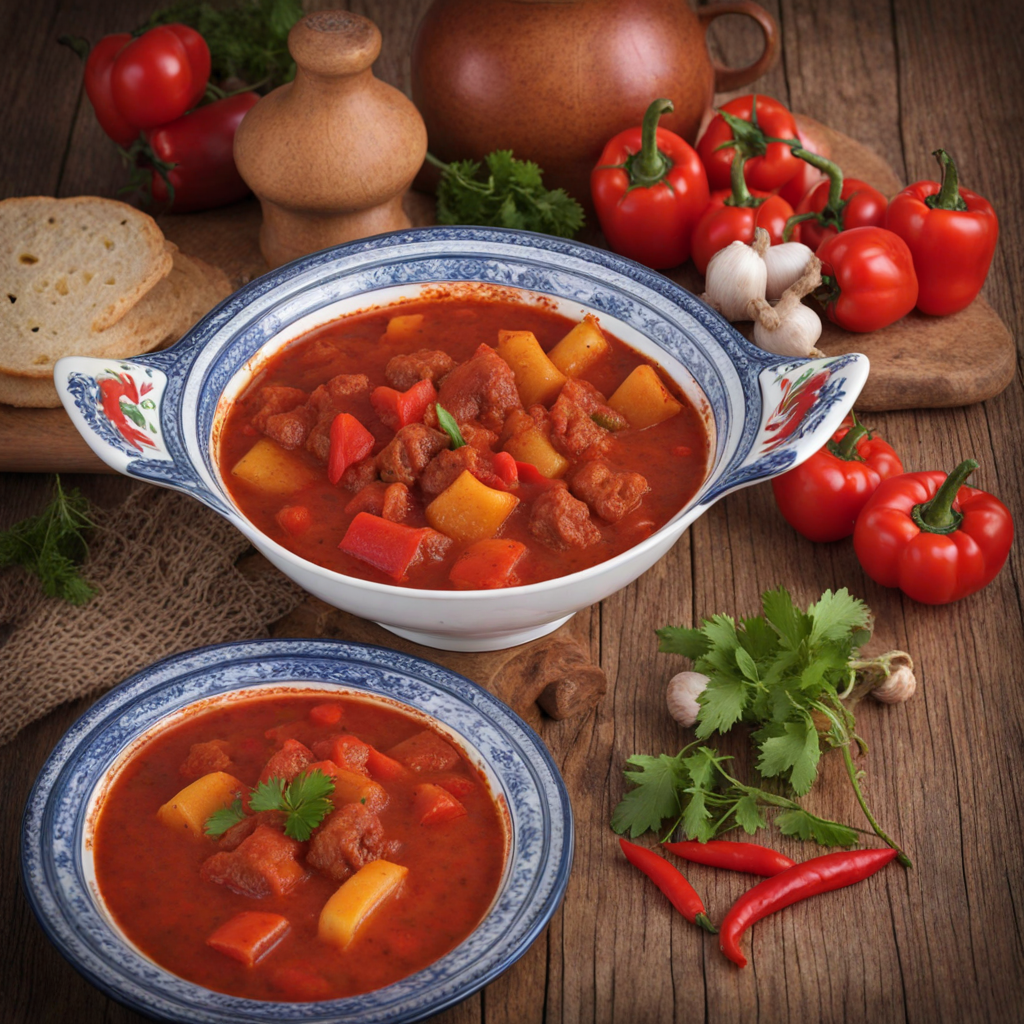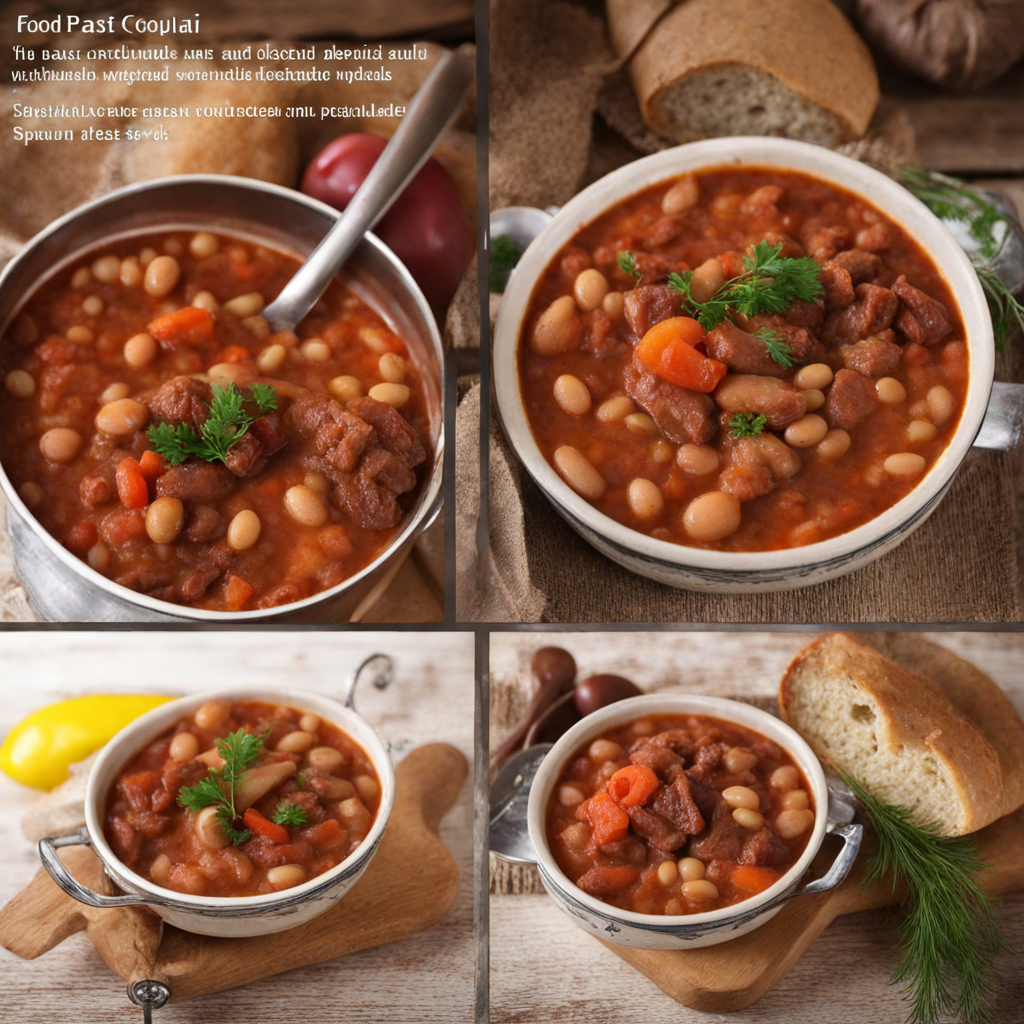Prebranac
Prebranac is a traditional Serbian dish that beautifully showcases the flavors of the Balkan region. This hearty bean casserole is primarily made with white beans, which are slow-cooked to perfection, absorbing a rich blend of spices and aromatics. The dish is often baked in a clay pot, which allows the beans to develop a deep, smoky flavor. The addition of sautéed onions and a hint of paprika enhances the overall taste, giving it a warm, comforting feel that is perfect for chilly evenings or family gatherings. What sets Prebranac apart is its simplicity and the depth of flavor achieved through slow cooking. The beans are typically soaked overnight, then simmered until tender, allowing them to soak up the onion and paprika-infused broth. This dish is often seasoned with bay leaves, garlic, and sometimes even a touch of vinegar, which provides a delightful tang that balances the richness of the beans and oils. The result is a creamy, savory dish that is both satisfying and nutritious. Prebranac is often enjoyed as a main course or a side dish, and it pairs beautifully with crusty bread or pickles. It embodies the essence of Serbian comfort food, providing a filling meal that’s perfect for sharing. Often served at family gatherings or festive occasions, this dish not only nourishes the body but also evokes a sense of nostalgia and warmth, making it a beloved staple in Serbian cuisine.
How It Became This Dish
The History of Пребранац: A Culinary Gem of Serbia Introduction Пребранац (Prebranac) is a beloved dish in Serbian cuisine, often referred to as baked beans. This hearty and flavorful casserole is not just a staple of everyday meals but also a reflection of the rich tapestry of Serbian culture and history. With its roots deeply embedded in rural traditions, Prebranac has evolved over the centuries while retaining its essential character. Origins and Ingredients The origins of Prebranac can be traced back to the agrarian societies of the Balkan Peninsula. Beans, particularly the white variety, have been cultivated in the region since ancient times. Archaeological findings suggest that legumes, including beans, were a crucial part of the diet in the Neolithic era. The simplicity and nutritional value of beans made them a vital source of sustenance for the rural population, especially during the long winters when other food sources were scarce. Traditionally, Prebranac is made with dried white beans, which are soaked and then cooked slowly with onions, garlic, and various spices. The dish is often enhanced with smoked meats or sausages, which add depth and flavor. The use of paprika, a spice that has become synonymous with Serbian cuisine, not only lends a distinctive color to the dish but also reflects the influence of various cultures that have passed through the region over centuries. Cultural Significance Prebranac is more than just a dish; it holds a significant place in Serbian culture and folklore. It is often served during family gatherings, celebrations, and religious holidays, embodying themes of togetherness and hospitality. In rural communities, Prebranac was traditionally prepared in large quantities to feed extended families and neighbors, symbolizing the importance of community bonds. The dish is particularly popular during the winter months and is often associated with St. Nicholas Day (Sveti Nikola) and other Orthodox Christian feasts. It is a common practice to prepare vegetarian versions of Prebranac during fasting periods, showcasing its versatility and adaptability to dietary restrictions. Regional Variations and Influence While the basic recipe for Prebranac remains consistent, regional variations abound across Serbia and the wider Balkan region. For example, in some areas, the dish is made with the addition of potatoes or other vegetables, while in others, it may be spiced with different herbs or flavored with smoked paprika. The influence of neighboring cuisines can also be seen in the dish. For instance, the use of smoked meats reflects a common practice in countries like Hungary and Romania, where similar bean dishes are popular. The incorporation of regional ingredients, such as local varieties of beans or specific types of smoked meats, gives each preparation of Prebranac its unique character. Historical Development The historical development of Prebranac mirrors the socio-political changes in Serbia and the Balkan region. The Ottoman Empire's presence in the Balkans for several centuries introduced new culinary techniques and ingredients, which influenced local cooking practices. The use of spices and the method of slow-cooking beans in clay pots are believed to have been enhanced during this period. In the 19th century, as Serbia began to establish its national identity and move away from Ottoman rule, there was a resurgence in the appreciation of traditional foods. Prebranac, with its humble origins and comforting flavors, became a symbol of national pride. Cookbooks from this era began to include regional recipes, and Prebranac was featured prominently as a staple dish. The 20th century brought further changes, especially during the Yugoslav era. The unification of various ethnic groups led to a blending of culinary traditions, and Prebranac became a dish enjoyed across the newly formed republics. It transcended regional boundaries, becoming a common feature at gatherings and celebrations, regardless of ethnic background. Contemporary Relevance Today, Prebranac remains a cherished dish in Serbia, often served at family gatherings, holiday feasts, and even modern restaurants that celebrate traditional cuisine. It is emblematic of the slow food movement, which emphasizes the importance of locally sourced, traditional dishes that connect people to their heritage. In urban areas, where the pace of life has accelerated, Prebranac is still prepared in homes, albeit sometimes with modern shortcuts, such as using canned beans. However, artisanal versions can be found in restaurants that pride themselves on offering authentic Serbian fare. The dish has also gained popularity among food enthusiasts and travelers, who seek to experience the true flavors of Serbia. Conclusion Prebranac is more than just a delicious bean casserole; it is a dish steeped in history, culture, and tradition. Its evolution reflects the changing dynamics of Serbian society while remaining a comforting reminder of home for many. As Serbia continues to navigate its identity in the modern world, Prebranac stands as a testament to the enduring power of food in bridging generations and preserving cultural heritage. Whether enjoyed in a rustic village or a contemporary urban setting, Prebranac embodies the spirit of Serbian hospitality and the richness of its culinary legacy.
You may like
Discover local flavors from Serbia







